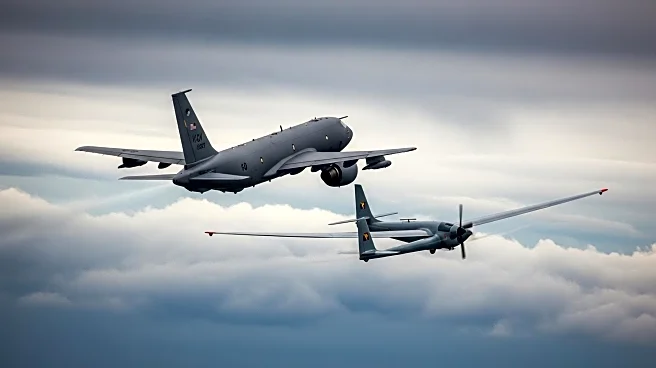What's Happening?
A USAFE Boeing KC-135 Stratotanker and a JP1 glider narrowly avoided a collision in Suffolk, England, during the Stratotanker's descent into RAF Mildenhall. The glider, on a cross-country flight, did not inform air traffic control of its presence and had turned off its transponder to conserve battery, leading to a lack of situational awareness. The Airprox Board rated the risk of collision as Category A, the highest possible, and noted that 'providence played a major part' in avoiding the crash. Both pilots were deemed to share equal responsibility for collision avoidance.
Why It's Important?
The incident underscores the critical importance of communication and situational awareness in aviation safety. It highlights potential vulnerabilities in air traffic management, especially concerning non-commercial aircraft like gliders. The near-miss serves as a reminder of the need for stringent adherence to safety protocols and the potential consequences of lapses in communication. It may prompt reviews of airspace management practices and regulations governing non-commercial flights.
What's Next?
The Airprox Board's findings may lead to recommendations for improved safety measures and communication protocols between different types of aircraft. Aviation authorities could consider implementing stricter regulations for glider flights near military airbases. The incident may also lead to increased training for pilots on collision avoidance and situational awareness. Stakeholders, including aviation safety boards and military officials, may engage in discussions to prevent similar occurrences.
Beyond the Headlines
The incident raises questions about the balance between freedom of flight for recreational pilots and the safety of military and commercial operations. It may lead to broader discussions on the integration of diverse aircraft types within shared airspace. The event also highlights the role of human factors in aviation safety and the potential need for technological solutions to enhance situational awareness.











